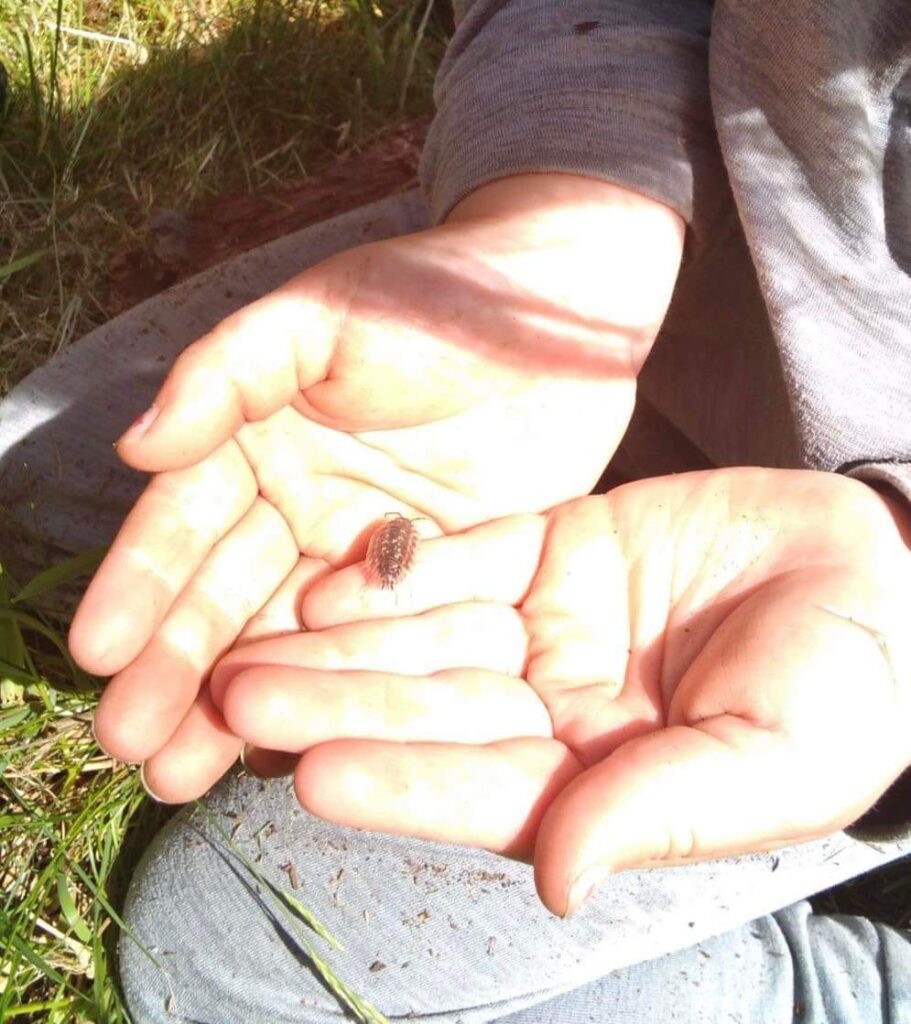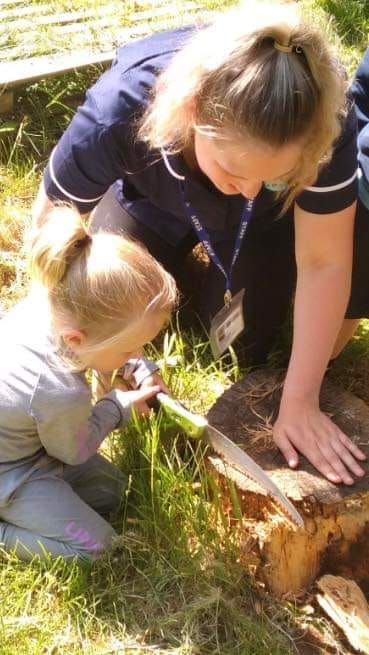Emma Rowlands currently works as the Deputy Manager, SENDCo and Outdoor Lead of a nursery within the Kids Planet group. Prior to undertaking her current role, Emma completed a BA (Hons) in Working and Teaching in the Early Years and an MSc in Child and Adolescent Mental Health and Wellbeing at Edge Hill University. Emma has worked within the Early Years sector for just over 8 years, starting as a student on placement in College and working her way up from an Early Years Practitioner to Room Lead, and more recently into Management.

Experiencing my childhood and growing up in the 21st century, I’m aware of and have experienced some of the technological, social and economic changes which over time have become the ‘norm’, in turn resulting in differing childhoods for children worldwide. Despite this, the majority of children participate in and experience an unprecedented range of activities which incorporate the arts as part of their daily lives. In this day and age, every child should be given access to the arts and culture, as a result of the benefits this access brings. Dower (2020) describes the arts as a positive force in society; with children feeling much more confident in their ability to explore, challenge, create, to be a part of society and make change happen. The arts empower children. I believe the arts should be a basic human right – with this further being enshrined in the United Nations Convention on the Rights of the Child (UNCRC) (2000), where it states children should have the right to participate fully in cultural and artistic life.
From a young age I have always been fascinated by and enjoyed engaging with the arts, with this interest initially being sparked from attending ballet classes. However, I was never truly aware of how many ways the arts could be represented in until reaching early adulthood and undertaking my role as a Deputy Manager within a local nursery, where my appreciation for different forms grew immensely due to engaging in and factoring many experiences around this. The arts come in an array of diverse and versatile forms; music, books, food, film, storytelling and the outdoors; anything which allows children to be creative as detailed throughout The Culture White Paper (2016). Prior to entering any formal educational settings, children’s identities have already started to be shaped as a result of previous experiences within the culture they live in, with it being paramount we as Early Years practitioners emphasise these identities from sociocultural perspectives, and viewing these as contextually dependent, varying and multifaceted.
Children do not live in a vacuum, but instead they observe, immerse and engage themselves in the everchanging world around them. By having equal opportunities to arts education, these allow for and foster a child’s imagination and creativity. Therefore, early childhood education presents both a unique challenge and opportunity; with part of this challenge being to support and engage Early Years practitioners in making the arts an integrated and essential element within children’s earliest experiences. Sparking children’s imagination and creativity has emerged as an integral part of early childhood education, with many Early Years pioneers, policies and specialists such as Arts and Communities Programme Report (2017) highlighting that arts education greatly enhances and fosters the development of these.

Within the Early Years there are multiple practices and experiences which can be used to promote the arts, imagination and creativity, whilst additionally enhancing a child’s knowledge and understanding in regards to culture and the world around them. For example, a pedagogical approach I have used to promote these is through outdoor learning, more specifically Beach School practices. Beach School sessions follow a similar ethos to that of the Scandinavian outdoor Forest School movement which correlates to the work of Froebel, however, instead uses the coast as a platform for a whole new type of learning experience which aims to provide children with the opportunity to explore their natural surroundings through a range of activities; in turn raising awareness about the local coast and how this can be sustained for future generations. To me, the Beach School approach is fascinating due to this being so flexible, well-rounded and child-focused; allowing for the development of emotional intelligence, confidence, team building, resilience and learning through trial and error whilst in a safe and organised environment. One experience I have devised and delivered for a group of children is a beach art activity, whereby the children were encouraged to create something of their choice using materials found within the surrounding natural environment. For this, some of the children created sand sculptures whereas others created images or engaged in mark-making. From experience, I believe outdoor activities such as this provide many benefits in regards to a child’s holistic development and wellbeing, which is further supported in policies such as the SEED Report (2018), where opportunities for outdoor and experiential learning are paramount due to these gradually diminishing as consequence of globalisation, urban growth and the use of and expansion of technology. Moreover, as this activity was child-led, it allowed the role of myself and the other Early Years practitioners to an observer, merely facilitative, supportive and to plan in the moment based around the children’s interests and fostering spontaneity where necessary; linking to Lev Vygotsky’s zones of proximal development (ZPD), sustained shared thinking and the more knowledgeable other. This allowed children’s investigation and curiosity to be initiated independently, with adult interactions predominantly being to introduce new vocabulary and skills depending on the inquisitiveness of the children. Additionally, this ensured the management and maintaining of rules and boundaries in association with health and safety when time was allocated for reflection and review amongst both the children and Early Years practitioners throughout the experience, loosely based on the ‘Plan, Do, Review’ inspired by the Highscope Approach. This experience also enabled practitioners to contribute to the enrichment of a child’s cultural capital. Prior to this experience, I was aware that we as practitioners had the fundamental responsibility to pull together and understand the knowledge children would already be bringing to their learning experience, in turn assisting us in developing a broader and more in-depth understanding of the things which motivated, excited and inspired the children to experience and see wonder and awe. Thus, this knowledge provided a cultural resource which we were then able to use to help children make sense of the world around them. Despite this particular type of experience usually taking place in children’s immediate community, whilst using resources, materials and interacting with others who are familiar to them, this still provided cultural relevance. However, this was more likely to aid the development of necessary dispositions to face future similar situations with confidence.
There are multitudes of benefits for children when engaging in the arts through outdoor learning experiences such as Beach School. For example, children are provided with opportunities to develop holistically as well as being provided with an increased potential for learning. By being within an outdoor learning environment whilst observing natural occurrences and taking in the fresh air, I have seen a great difference in the wealth of opportunities and attainment compared to those experienced indoors as a result of being able to value and connect with the natural environment through kinesthetic learning. This further links to the 2030 Agenda for Sustainable Development, adopted by all of the United Nations member states in 2015; detailing how this provides a shared blueprint for prosperity and peace for the planet and people, for now and in the future. Within this, there are 17 Sustainable Development Goals which are classified as an urgent call for action by all countries. The 3rd Sustainable Development Goal seeks to ensure health and well-being for all, with the 15th focusing on the protection, restoring and promoting of sustainable use of ecosystems.

Correlating to this, Beach School experiences provide opportunities for safe risk taking. During this experience, the other Early Years practitioners and I used a risk benefit analysis to ensure the children were able to take their intended paths of development, learning and play where they would like; paramount in enabling children to take risks without interference or worries from an adult. Although consciously Early Years practitioners may not mean to interfere, through experiences such as this it is a lot more common, especially if there are expectations or an exemplar are shown and portrayed to children. Instead, when other Early Years practitioners and I observed, modelled certain behaviours and only intervened when needed to facilitate and extend pre-existing understanding and knowledge, this assisted the children in learning how to negotiate, take turns, collaboratively work together, resolve conflicts, develop decision making skills, move at their own pace and pursue their own interests and passions; allowing children to fully immerse themselves in the experience. It is clear spending time in outdoor environments is highly beneficial for a child’s development and learning, especially as modern day living often separates us from nature and our body’s natural cycles. The frontal lobe brain activity decreases when outdoors, and the alpha waves which are associated with a calm, but more alert state increase; thus aiding emotional equilibrium and cognitive abilities.
It is evident there are multiple benefits for children when they are provided access and are exposed to the arts and culture. The enhancement and fostering of a child’s imagination and creativity has emerged as an integral part of early childhood education. The importance of ensuring that practices such as Beach School encompass these is paramount; as these provide an array of opportunities to develop children’s understanding of the world and broaden their knowledge about different environments, experiences as well as an overall appreciation for the arts. What happens when we value what goes on beyond the classroom will contribute to the enrichment of a child’s cultural capital.
